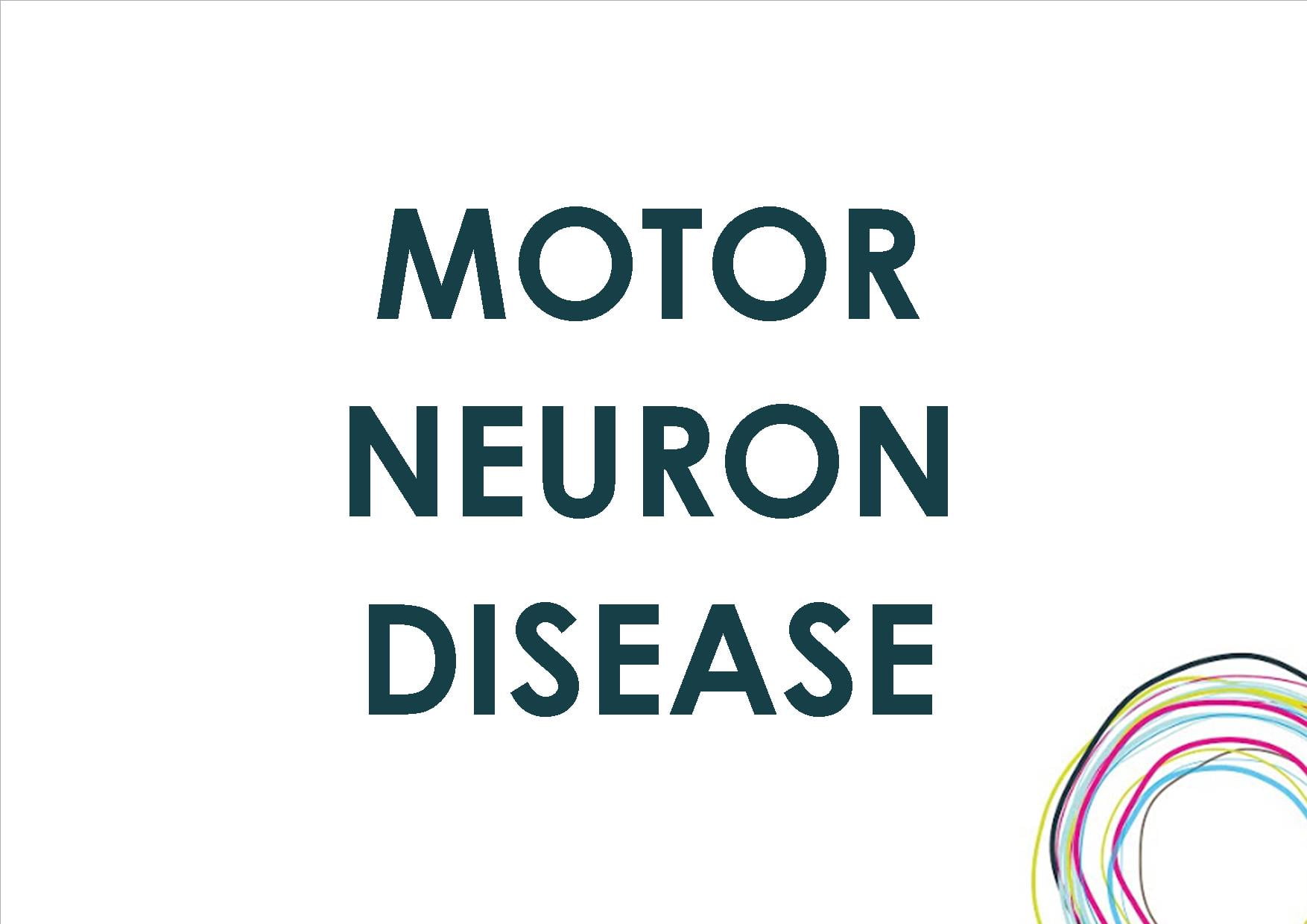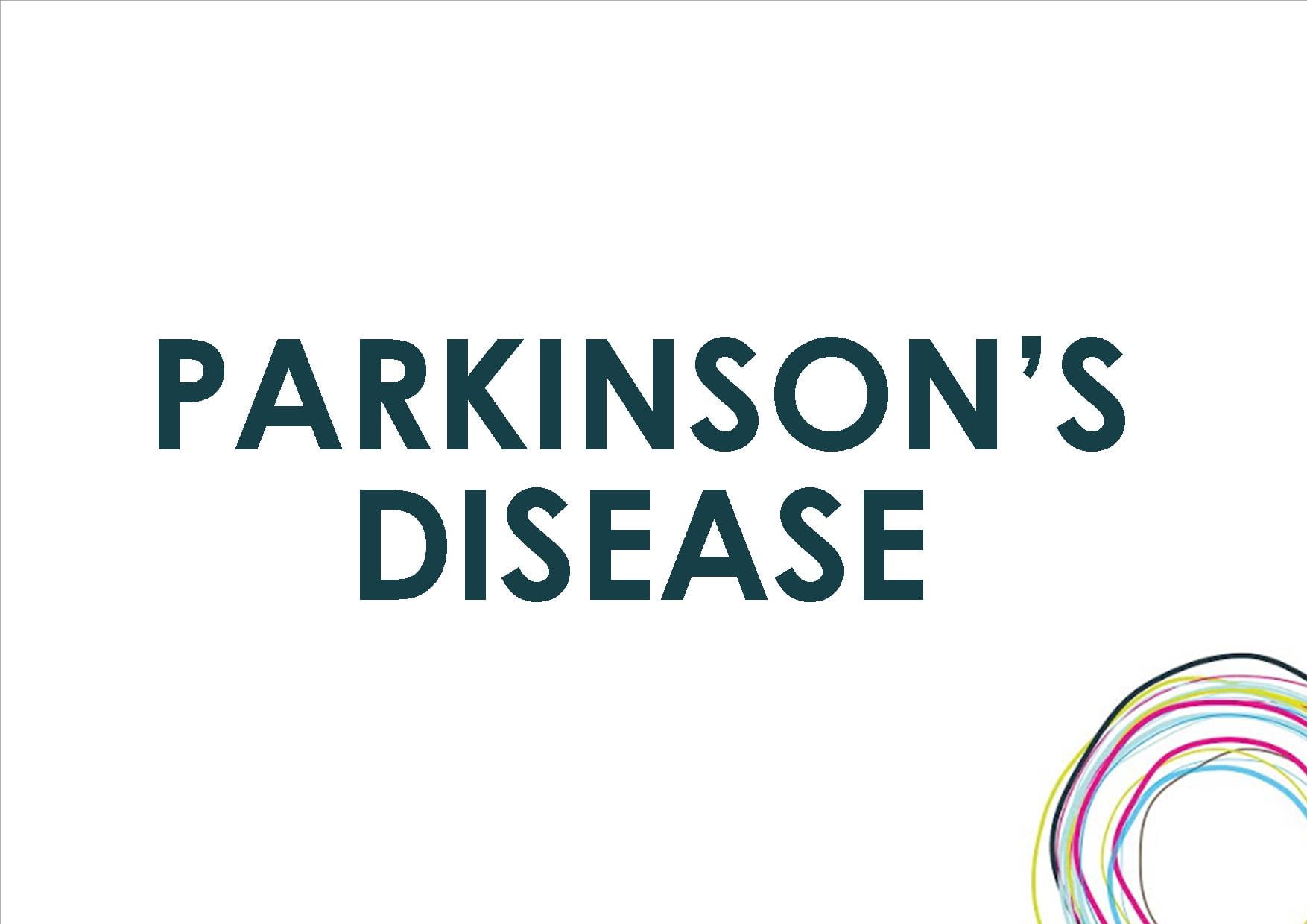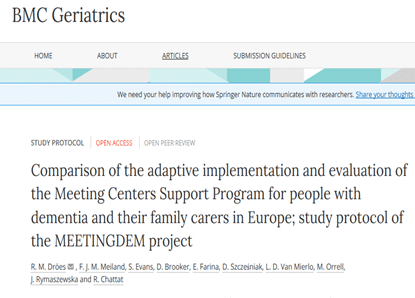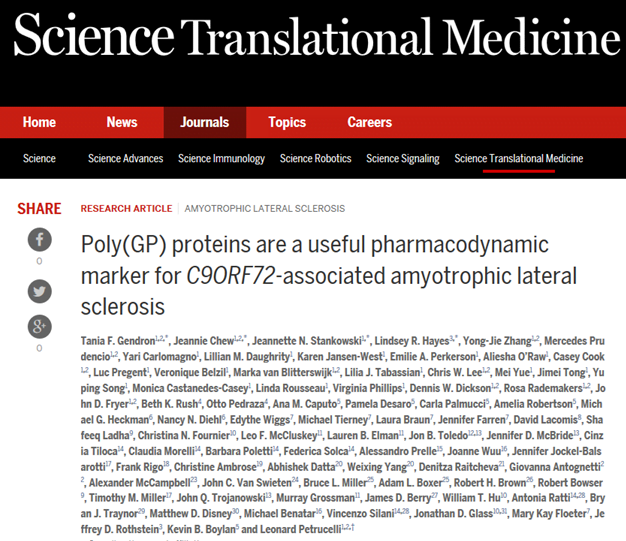 “APP, PSEN1, and PSEN2 mutations in early-onset Alzheimer disease: A genetic screening study of familial and sporadic cases” has been published in the journal PLOS Medicine. This work was supported in part by JPND through the PERADES project, selected in the 2012 risk factors call.
“APP, PSEN1, and PSEN2 mutations in early-onset Alzheimer disease: A genetic screening study of familial and sporadic cases” has been published in the journal PLOS Medicine. This work was supported in part by JPND through the PERADES project, selected in the 2012 risk factors call.
Author Archives: jpnd
 Researchers have shown for the first time that Amyotrophic Lateral Sclerosis (ALS) and schizophrenia have a shared genetic origin, indicating that the causes of these diverse conditions are biologically linked. The work was published in Nature Communications.
Researchers have shown for the first time that Amyotrophic Lateral Sclerosis (ALS) and schizophrenia have a shared genetic origin, indicating that the causes of these diverse conditions are biologically linked. The work was published in Nature Communications.
By analyzing the genetic profiles of almost 13,000 ALS cases and over 30,000 schizophrenia cases, the research confirms that many of the genes that are associated with these two very different conditions are the same.
In fact, the research has shown an overlap of 14% in genetic susceptibility to the adult onset neuro-degeneration condition ALS and the developmental neuropsychiatric disorder schizophrenia.
While overlaps between schizophrenia and other neuropsychiatric conditions including bipolar affective disorder and autism have been shown in the past, this is the first time that an overlap in genetic susceptibility between ALS and psychiatric conditions has been shown.
The research was prompted by earlier epidemiological studies that showed that people with ALS were more likely than expected to have other family members with schizophrenia, and to have had another family member who had committed suicide.
The researchers say that they will continue to study the links between ALS and psychiatric conditions using modern genetics, epidemiology and neuroimaging, and in this way will develop new and more effective treatments that are based on stabilizing disrupted brain networks.
Paper: “Genetic correlation between amyotrophic lateral sclerosis and schizophrenia”
Reprinted from materials provided by Trinity College Dublin.
 “Brachial plexus magnetic resonance imaging differentiates between inflammatory neuropathies and does not predict disease course” has been published in the journal Brain and Behavior. This work was supported in part by JPND through the SOPHIA project, selected in the 2011 biomarkers call, the STRENGTH project, selected in the 2012 risk factors call and the ALSCare project, selected in the 2012 healthcare evaluation call.
“Brachial plexus magnetic resonance imaging differentiates between inflammatory neuropathies and does not predict disease course” has been published in the journal Brain and Behavior. This work was supported in part by JPND through the SOPHIA project, selected in the 2011 biomarkers call, the STRENGTH project, selected in the 2012 risk factors call and the ALSCare project, selected in the 2012 healthcare evaluation call.
Researchers have found that engaging in mentally stimulating activities, even late in life, may protect against new-onset mild cognitive impairment, which is the intermediate stage between normal cognitive aging and dementia. The study found that cognitively normal people 70 or older who engaged in computer use, craft activities, social activities and playing games had a decreased risk of developing mild cognitive impairment. The results were published in JAMA Neurology.
The researchers followed 1,929 cognitively normal participants for an average duration of four years. After adjusting for sex, age and educational level, researchers discovered that the risk of new-onset mild cognitive impairment decreased by 30 percent with computer use, 28 percent with craft activities, 23 percent with social activities, and 22 percent with playing games.
Researchers conducted a neurocognitive assessment at the time of enrollment in the study, with evaluations every 15 months. Following the assessment, an expert consensus panel made the classification of normal cognition or mild cognitive impairment for each study participant, based on published criteria.
The benefits of being cognitively engaged even were seen among apolipoprotein E (APOE) ε4 carriers. APOE ε4 is a genetic risk factor for mild cognitive impairment and Alzheimer’s dementia. However, for APOE ε4 carriers, only computer use and social activities were associated with a decreased risk of mild cognitive impairment.
Paper: “Association Between Mentally Stimulating Activities in Late Life and the Outcome of Incident Mild Cognitive Impairment, With an Analysis of the APOE ε4 Genotype”
Reprinted from materials provided by Mayo Clinic.
 The most common genetic cause of the brain diseases frontotemporal dementia (FTD) and amyotrophic lateral sclerosis (ALS) is a mutation in the C9orf72 gene. Researchers have demonstrated that if an affected parent passes on this mutation, the children will be affected at a younger age (than the parent). There are no indications that the disease progresses more quickly. These results were published JAMA Neurology.
The most common genetic cause of the brain diseases frontotemporal dementia (FTD) and amyotrophic lateral sclerosis (ALS) is a mutation in the C9orf72 gene. Researchers have demonstrated that if an affected parent passes on this mutation, the children will be affected at a younger age (than the parent). There are no indications that the disease progresses more quickly. These results were published JAMA Neurology.
After Alzheimer’s disease, FTD is the most common form of dementia in young patients. A fraction of FTD patients show symptoms consistent with ALS, a disease in which the nerve cells that control the muscles in the brain and spinal cord are affected. This causes ALS patients to progressively lose muscle mass, resulting in loss of strength in the limbs and problems with speaking, swallowing, and breathing. ALS is more common without FTD symptoms.
The mutation in C9orf72 consists of a repetition of a short DNA sequence GGGGCC which can expand in patients up to several thousands of repetitions. It is not yet known why some patients get FTD and others ALS.
The age at first presentation of disease symptoms ranges in patients from 29 to 82 years, even in patients from the same family. Until recently, there was no explanation for this high variability. The researchers demonstrated in 2016 that the age of onset is determined by the number of GGGGCC repeats: the more repetitions, the earlier the age of onset. In C9orf72 families in which the affected parent had a late age of onset and their affected children an earlier age of onset, the researchers provided evidence that the GGGGCC repeat in the C9orf72 gene expanded from a short sequence of repeats (less than 200 repeats) to a long one (more than a thousand).
In the new study, the researchers looked at the age of onset across multiple generations. They found that in successive generations of C9orf72 families, the age of onset was markedly different. According to the researchers, most of the patients from the later generations — i.e., the children or grandchildren of the oldest subjects – showed disease symptoms at a younger age, even as the disease was shown to progress no more quickly than in older generations.
Paper: « Children of patients with C9orf72 mutations are at a greater risk of frontotemporal dementia or ALS at a younger age »
Reprinted from materials provided by VIB – Flander Interuniversity Institute for Institute for biotechnology.
 “An aberrant phase transition of stress granule triggered by misfolded protein and prevented by chaperione function” has been published in The EMBO Journal. This work has been supported in part by JPND through the CureALS project, selected in the 2015 JPco-fuND call.
“An aberrant phase transition of stress granule triggered by misfolded protein and prevented by chaperione function” has been published in The EMBO Journal. This work has been supported in part by JPND through the CureALS project, selected in the 2015 JPco-fuND call.
 In a paper published in the journal Cell Death and Differentiation, a research team has reported that a gene called ATF4 plays a key role in Parkinson’s disease, acting as a ‘switch’ for genes that control mitochondrial metabolism for neuron health. By discovering the gene networks that orchestrate the process of ATF4 expression, the researchers have singled out new therapeutic targets that could prevent neuron loss.
In a paper published in the journal Cell Death and Differentiation, a research team has reported that a gene called ATF4 plays a key role in Parkinson’s disease, acting as a ‘switch’ for genes that control mitochondrial metabolism for neuron health. By discovering the gene networks that orchestrate the process of ATF4 expression, the researchers have singled out new therapeutic targets that could prevent neuron loss.
Some forms of Parkinson’s are caused by mutations in the genes PINK1 and PARKIN, which are instrumental in mitochondrial quality control. Fruit flies with mutations in these genes accumulate defective mitochondria and exhibit Parkinson’s-like changes, including loss of neurons.
The researchers used PINK1 and PARKIN mutant flies to search for other critical Parkinson’s genes — and using a bioinformatics approach discovered that the ATF4 gene plays a key role.
The findings build upon recent research that discovered several genes that protect neurons in Parkinson’s disease, creating possibilities for new treatment options.
Two of the genes — PINK1 and PARKIN — affect how mitochondria break down amino acids to generate nucleotides – the metabolism of these molecules generates the energy that cells need to live.
Dysfunctional mitochondrial metabolism has been linked to Parkinson’s and research has previously showed that boosting this metabolism with nucleotides can protect neurons.
Paper: “dATF4 regulation of mitochondrial folate-mediated one-carbon metabolism is neuroprotective”
Reprinted from materials provided by University of Leicester.
 “Comparison of the adaptive implementation and evaluation of the Meeting Centers Support Program for people with dementia and their family careers in Europe; study protocol of the MEETINGDEM project” has been published in the journal BMC Geriatrics. This work has been supported in part by JPND through the MEETINGDEM project, selected in the 2012 healthcare evaluation call.
“Comparison of the adaptive implementation and evaluation of the Meeting Centers Support Program for people with dementia and their family careers in Europe; study protocol of the MEETINGDEM project” has been published in the journal BMC Geriatrics. This work has been supported in part by JPND through the MEETINGDEM project, selected in the 2012 healthcare evaluation call.
 Disabling a part of brain cells that acts as a tap to regulate the flow of proteins has been shown to cause neurodegeneration, a new study has found.
Disabling a part of brain cells that acts as a tap to regulate the flow of proteins has been shown to cause neurodegeneration, a new study has found.
The research, which was carried out in mice, focused on the Golgi apparatus — a compartment inside all cells in the body that controls the processing and transport of proteins. It is fundamental for the growth of the cell membrane and also for the release of many types of proteins such as hormones, neurotransmitters and the proteins that make up our skeletons.
The study was published in the Proceedings of the National Academy of Sciences.
Although the function of the Golgi apparatus, named after its Italian discoverer, is well understood, it has not been previously been shown to have a role in neurodegeneration. With these results the scientists think they may have found a new avenue to explore in the search for the causes of some neurodegenerative diseases.
How much the Golgi apparatus contributes to the major neurodegenerative diseases such as Alzheimer’s or Parkinson’s is something that is currently unclear, though other studies have made this link.
Paper: “Loss of the golgin GM130 causes Golgi disruption, Purkinje neuron loss, and ataxia in mice”
Reprinted from materials provided by University of Manchester.
 “Poly(GP) proteins are a useful pharmacodynamic marker for C9ORF72-associated amyotrophic lateral sclerosis” has been published in the journal Science Translational Medicine. This work was supported in part by JPND through the STRENGTH project, selected in the 2012 risk factors call.
“Poly(GP) proteins are a useful pharmacodynamic marker for C9ORF72-associated amyotrophic lateral sclerosis” has been published in the journal Science Translational Medicine. This work was supported in part by JPND through the STRENGTH project, selected in the 2012 risk factors call.
